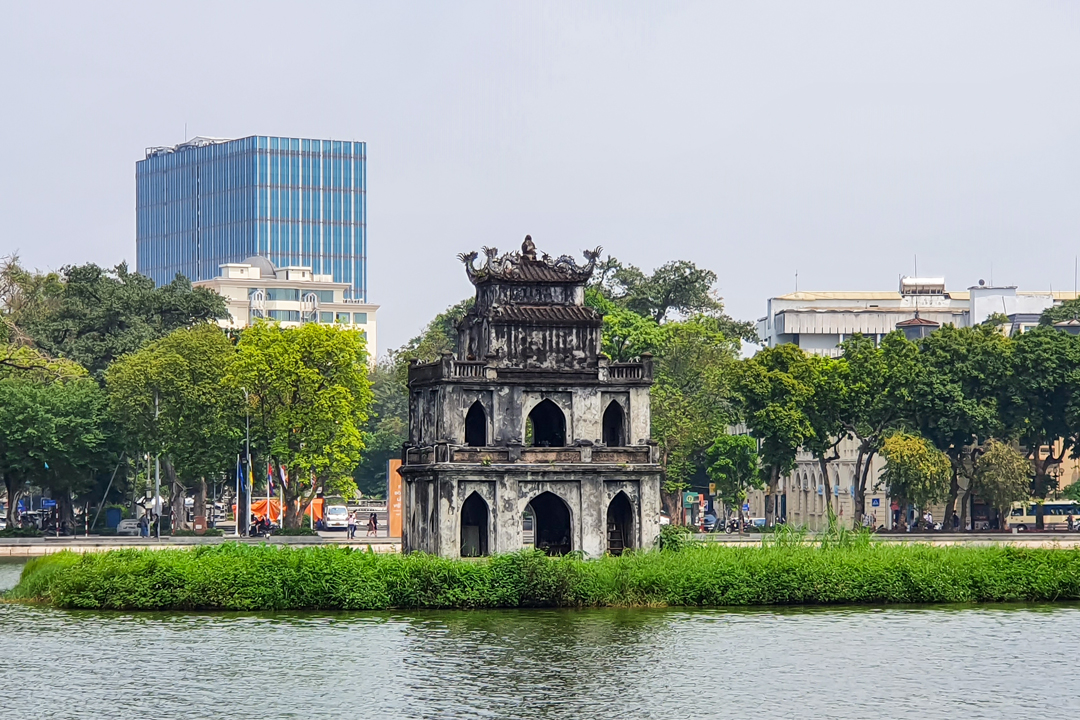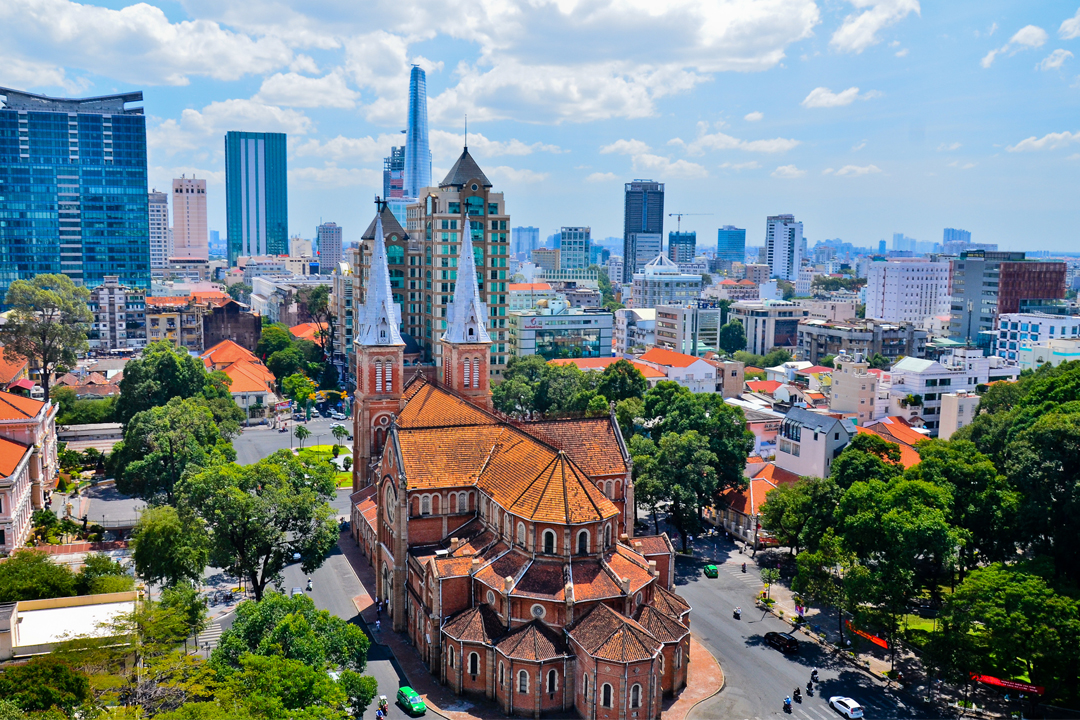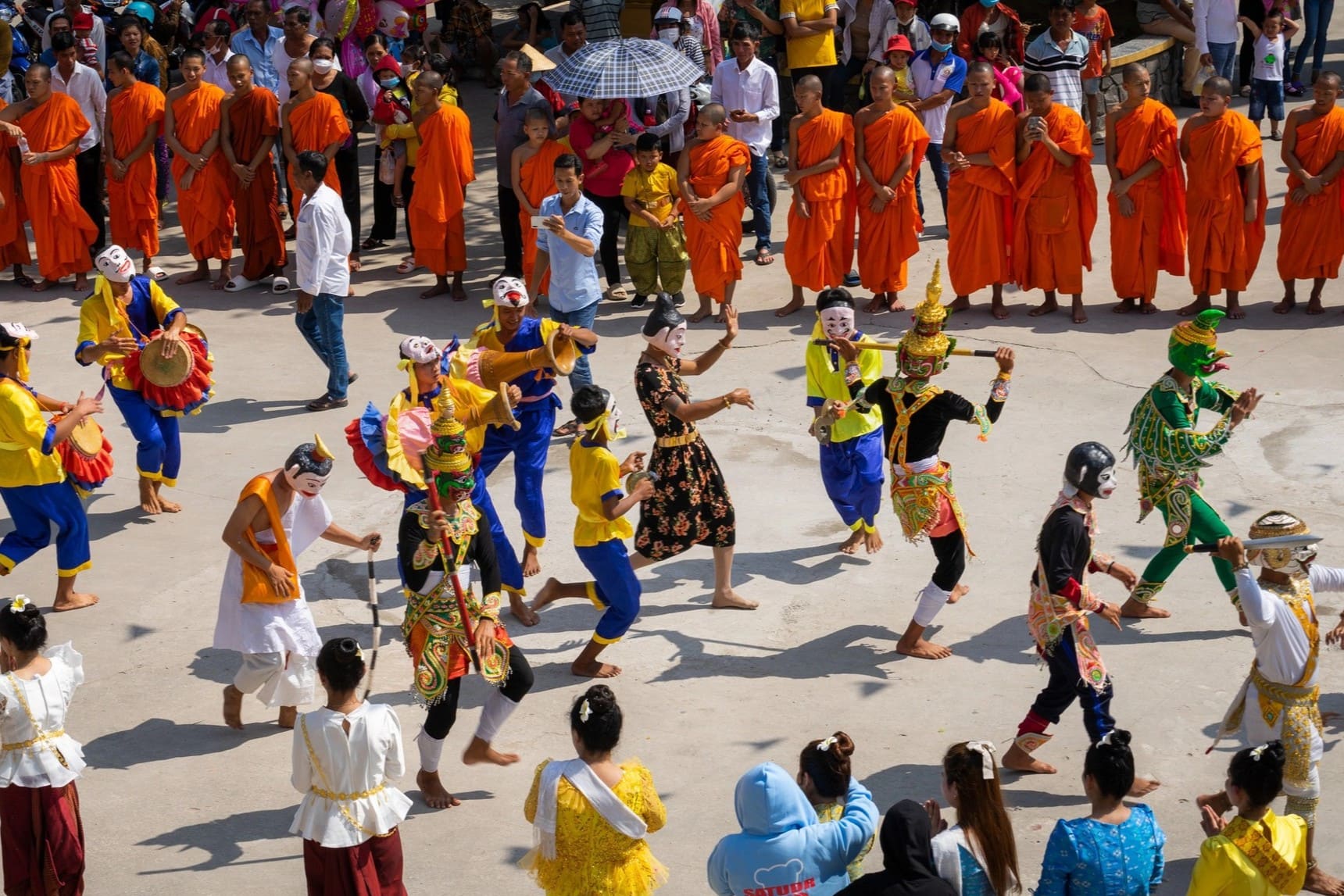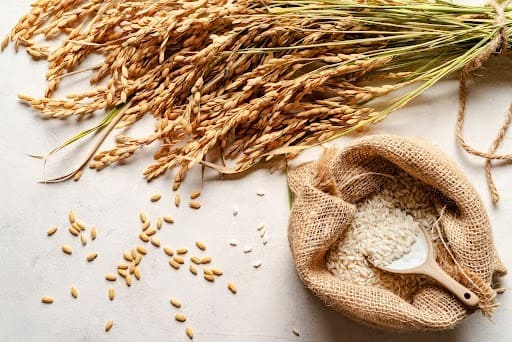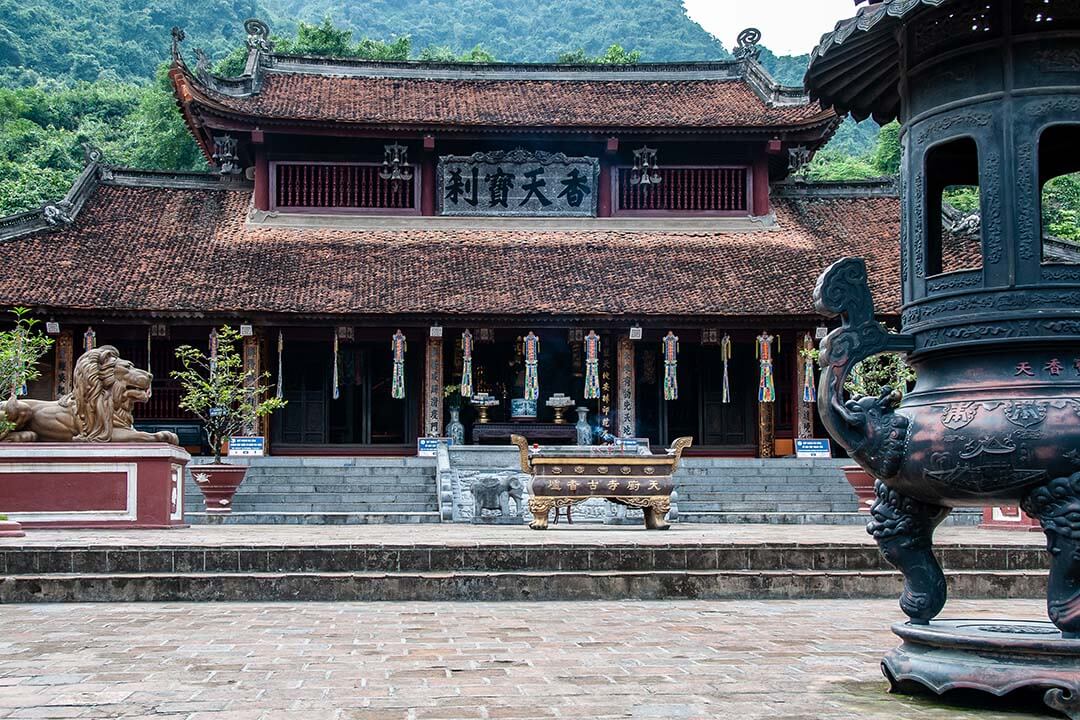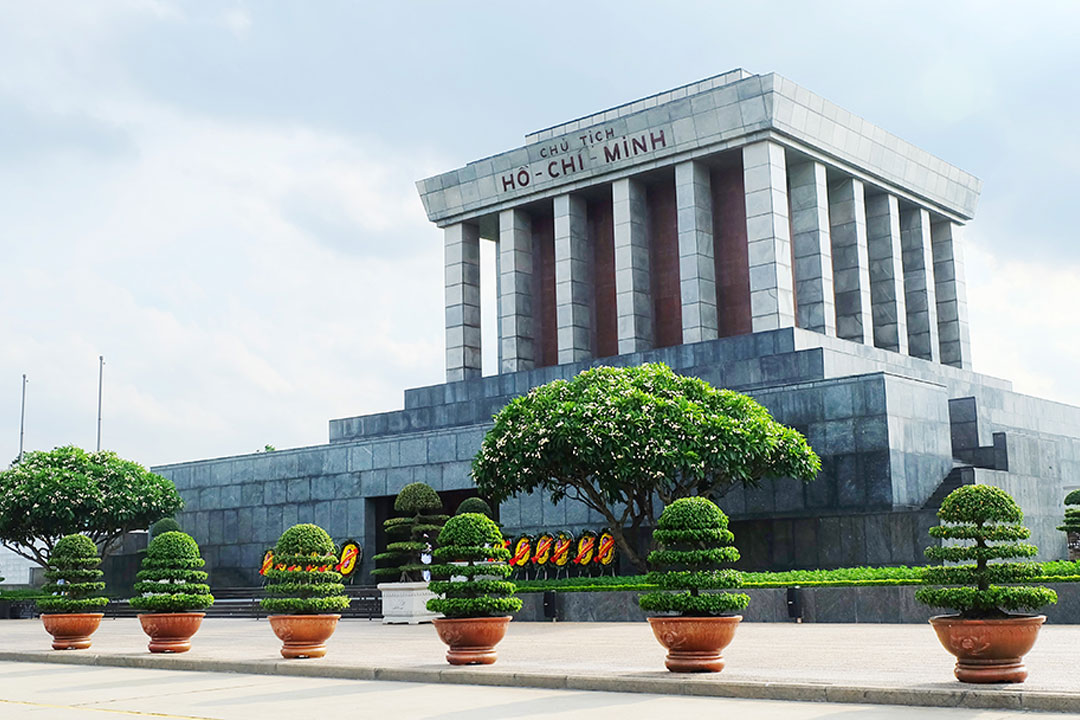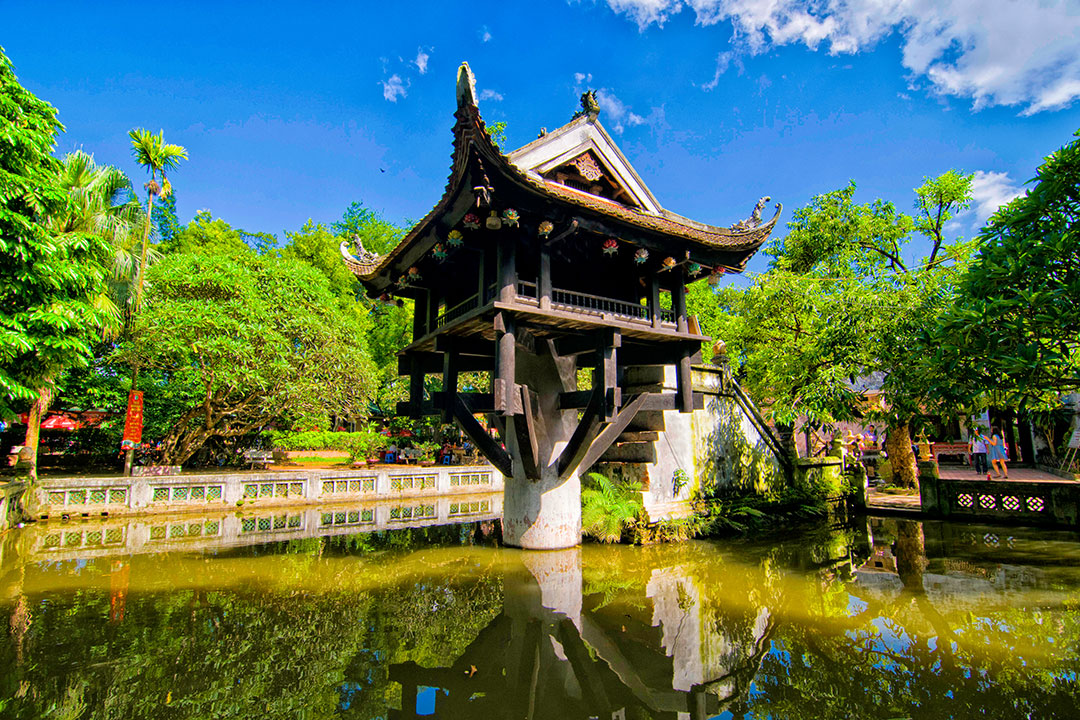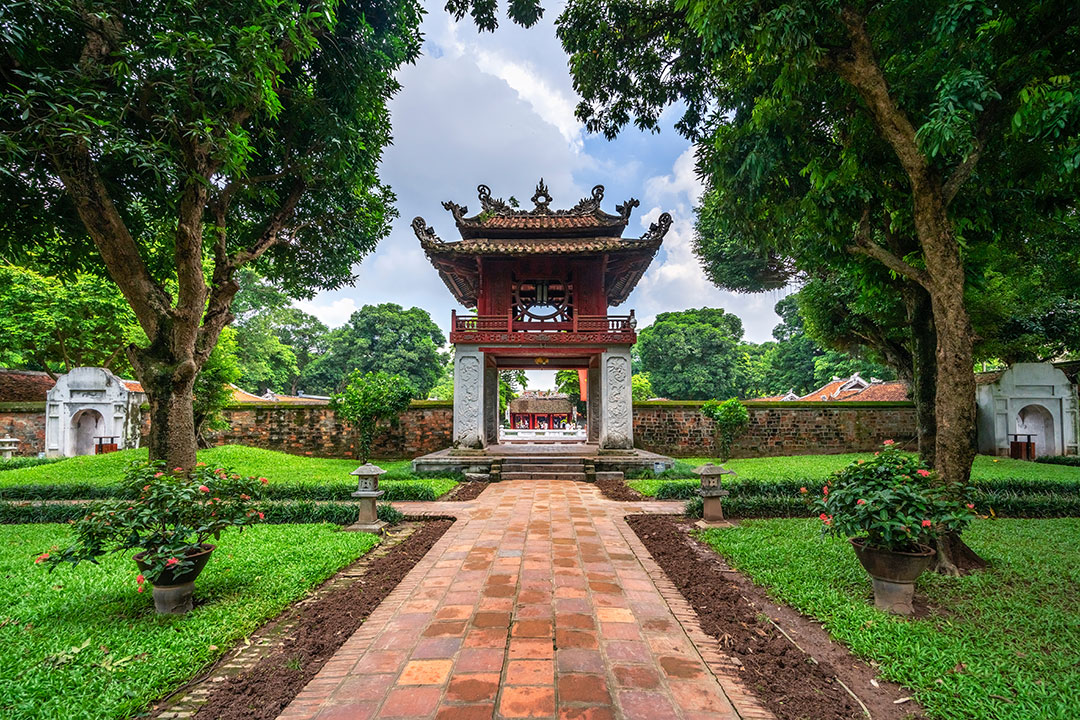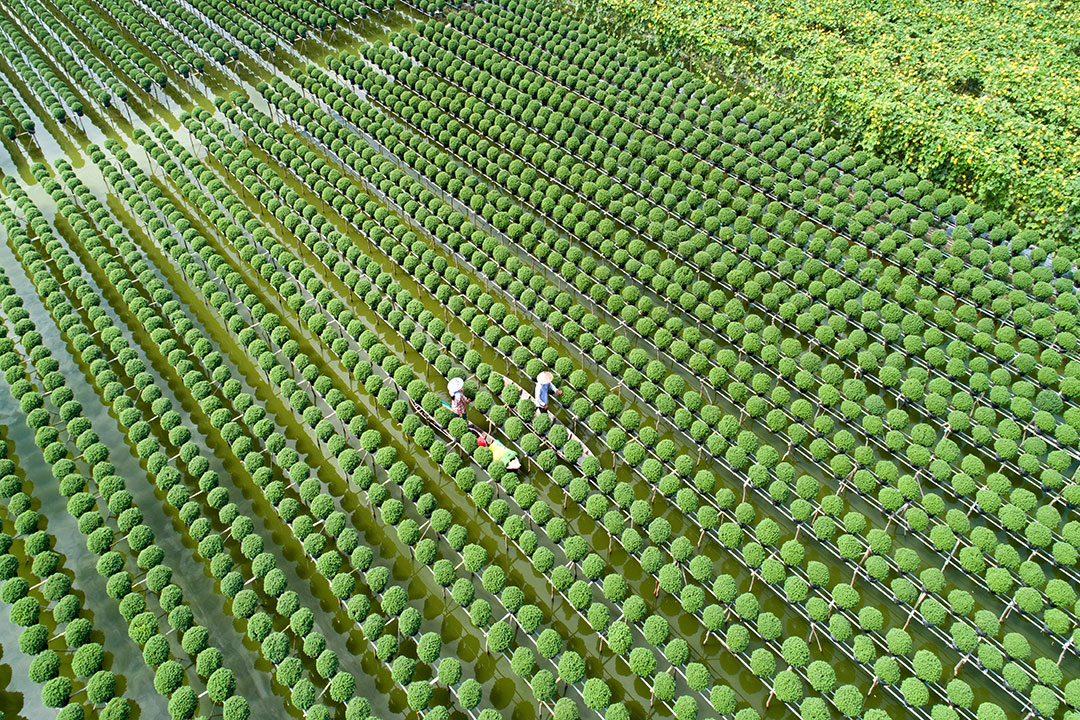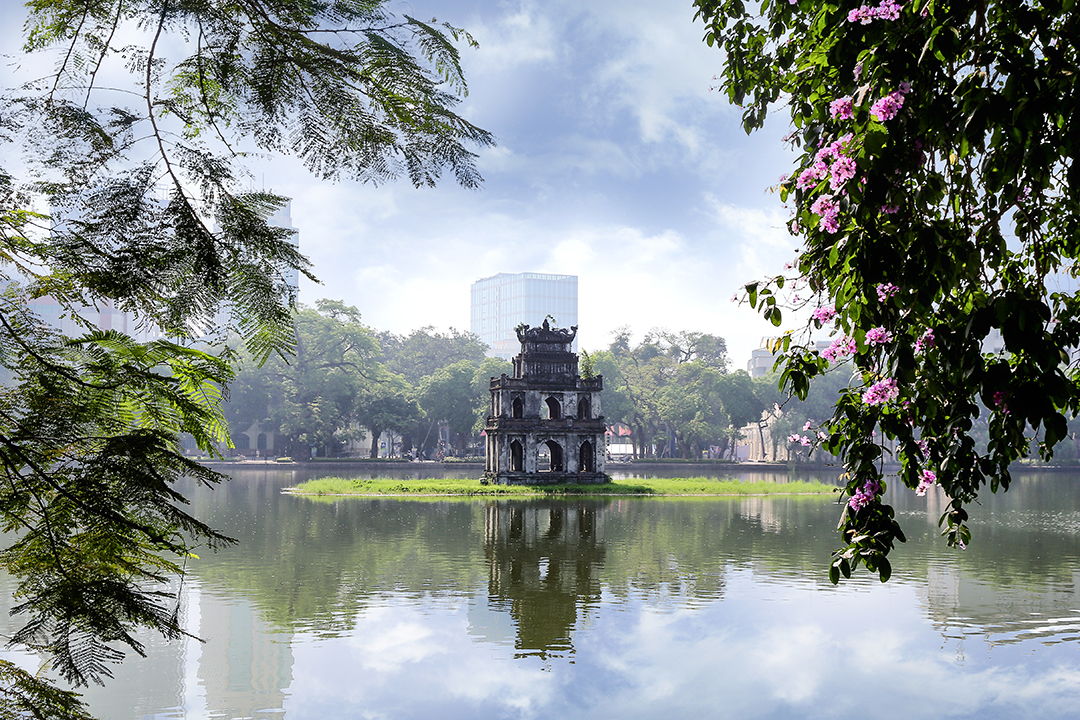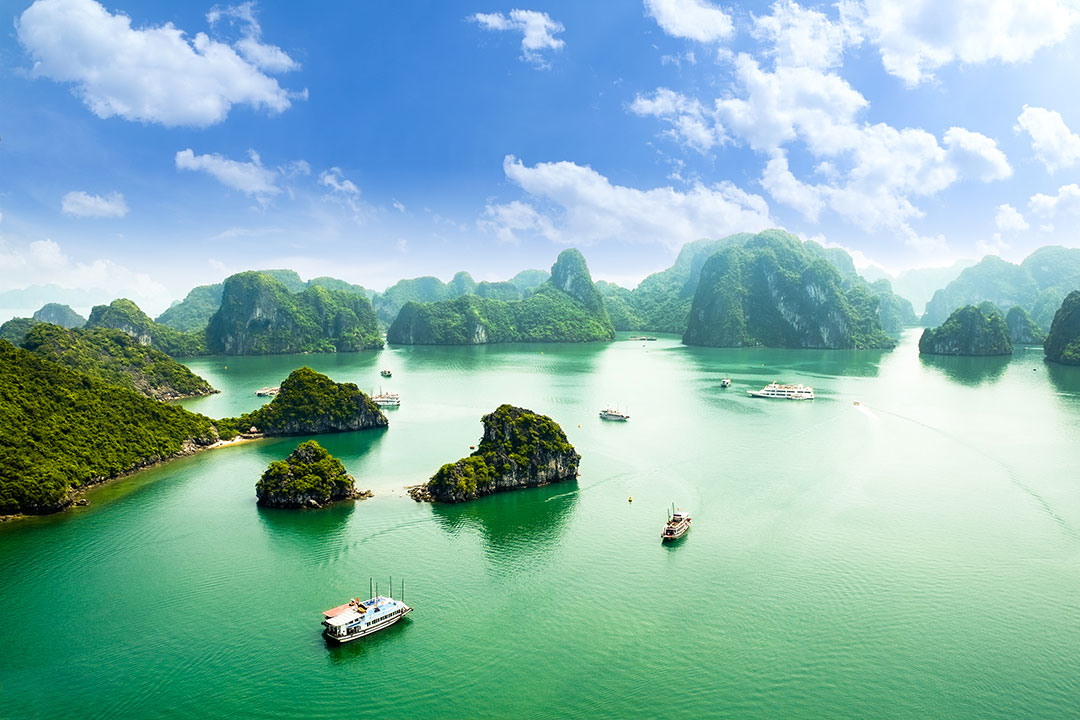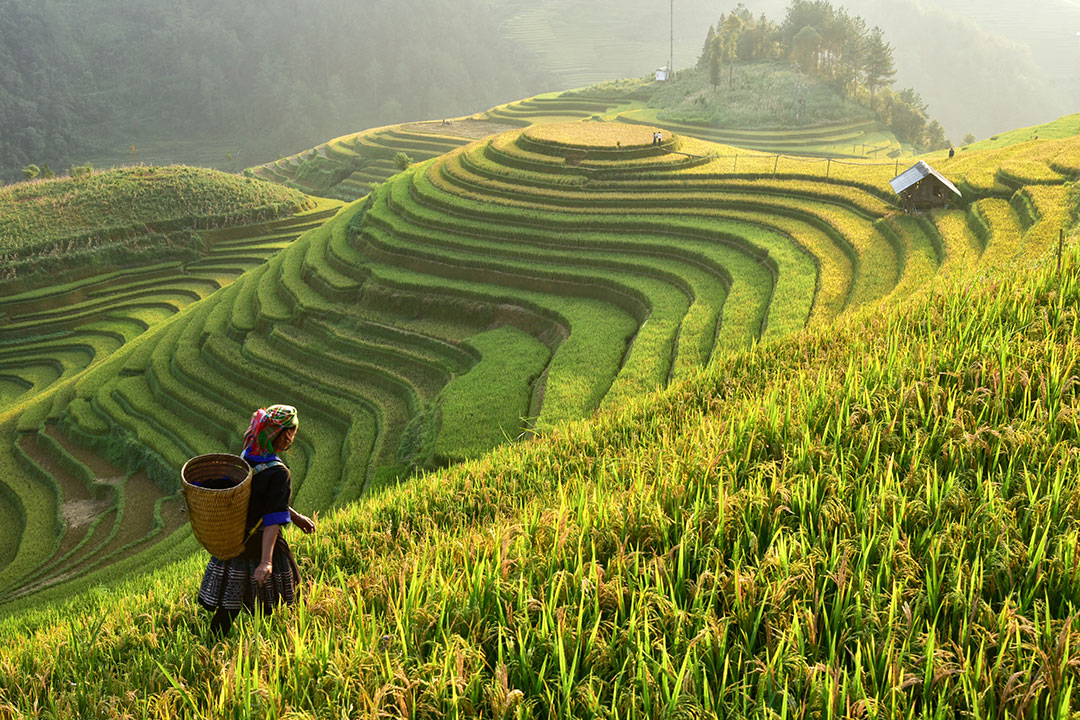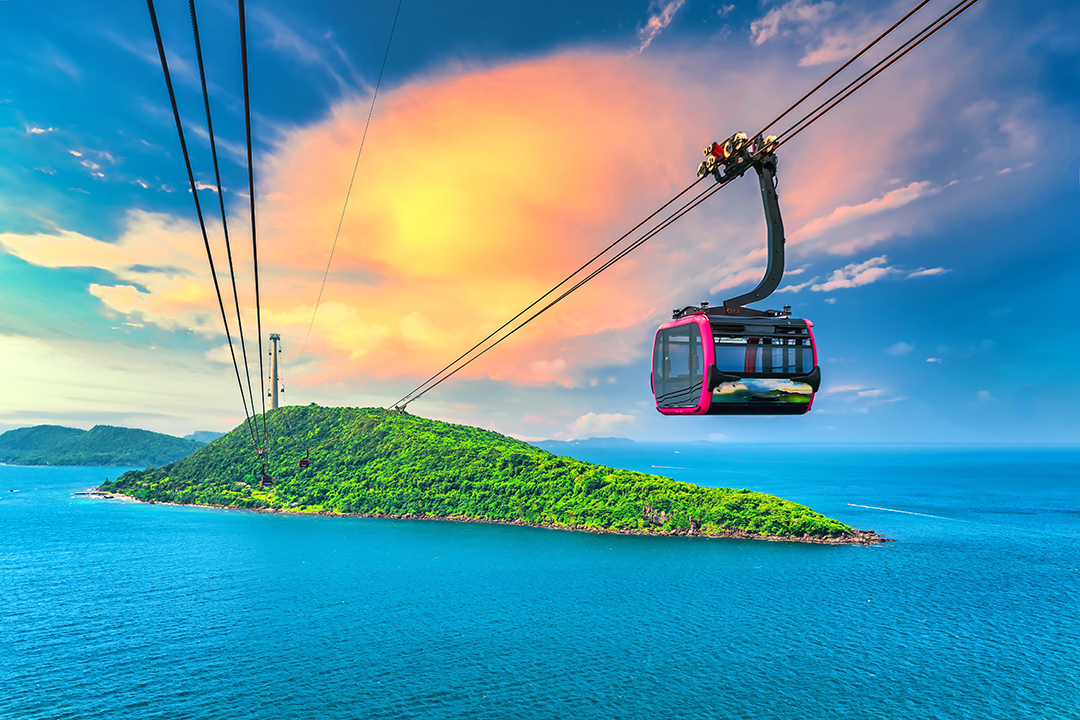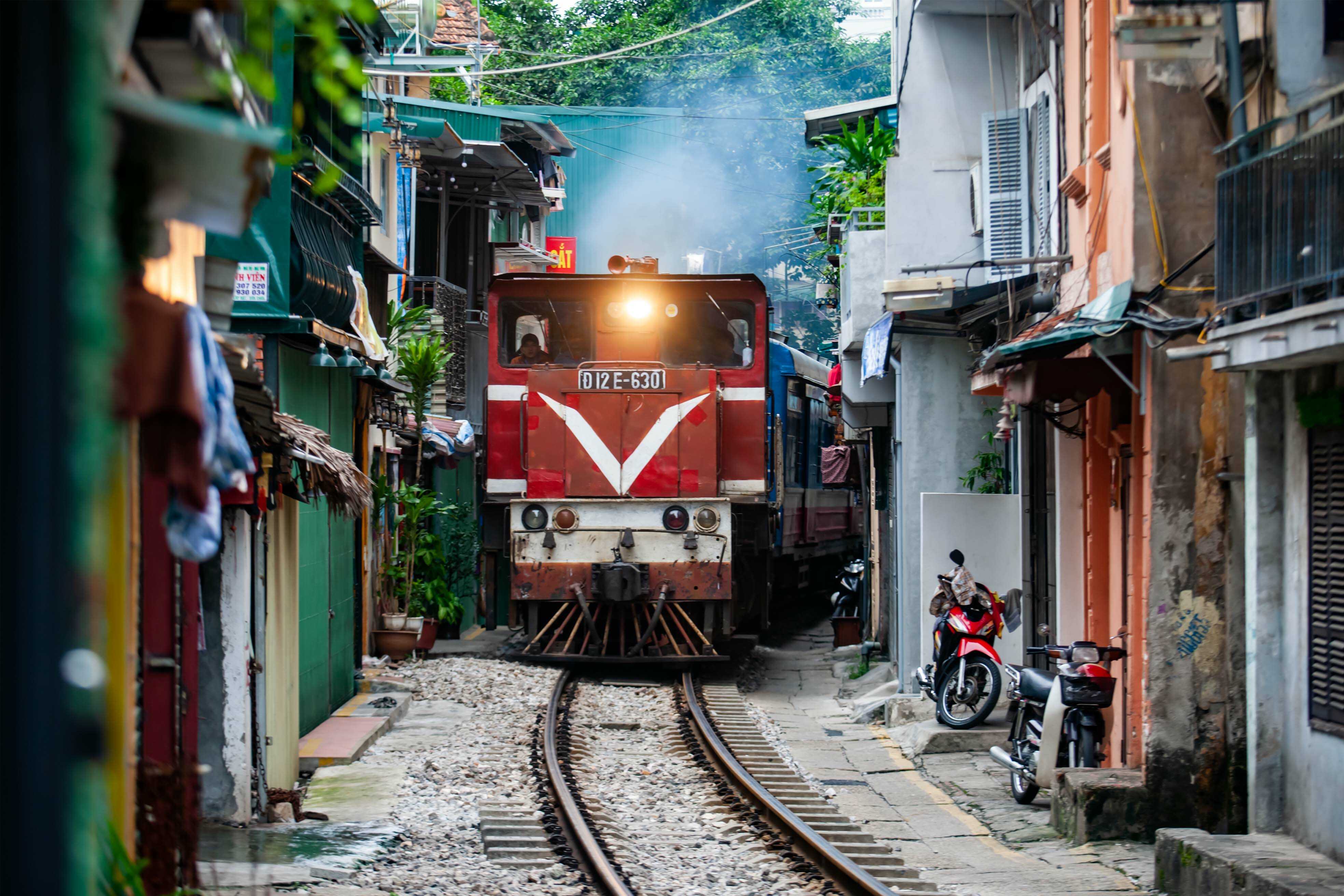Perfume Pagoda: History, Structure, Things to Do & Travel Guide
The Perfume Pagoda is more than just a spiritual haven nestled within lush landscapes it represents a mesmerizing journey through Vietnamese culture, spirituality, and nature. As one of Vietnam’s most iconic pilgrimage sites, it entices travelers seeking more than ordinary adventures. It offers breathtaking views, captivating legends, and a deep sense of peace that resonates with every visitor.
If you're seeking spiritual growth or a deeper connection with Vietnam's culture, the Perfume Pagoda offers a transformative experience. GTrip invites you to uncover the harmony of faith, legend, and nature woven into every step of this timeless pilgrimage.
Is the Perfume Pagoda a worthwhile destination to visit?
The Perfume Pagoda (Huong Pagoda) stands as one of Vietnam's most significant religious sites, offering a blend of spiritual enrichment and natural beauty that attracts both pilgrims and tourists. Nestled in the limestone mountains of Huong Son, this complex combines remarkable cave temples, historic pagodas, and breathtaking landscapes. Before deciding if this destination deserves a place on your Vietnam itinerary, let's explore its essentials, history, and impressive structures to help you make an informed choice.
Necessary information about Perfume Pagoda
The Perfume Pagoda, also known as Huong Tich Pagoda, is a Buddhist complex set in the scenic Huong Son limestone mountains, My Duc, Hanoi. It’s about 55 km southwest of Hanoi. It’s open daily from 7:00 AM to 5:00 PM, with extended hours on lunar full moon days due to increased pilgrim traffic.
Entry & transportation costs
- Entrance ticket: 120,000 VND/person (covers all pagodas in the complex)
- Boat ride on the Yen Stream:
- Thien Tru - Huong Tich route: 85,000 VND/person
- Tuyet Son - Long Van route: 65,000 VND/person
- Cable car to Huong Tich Cave:
- Adults: 220,000 VND round trip
- Children: 150,000 VND round trip
- Electric cart from parking lot to the boat station: 20,000 VND (one-way)
- Motorbike/car parking fee: from 30,000 VND
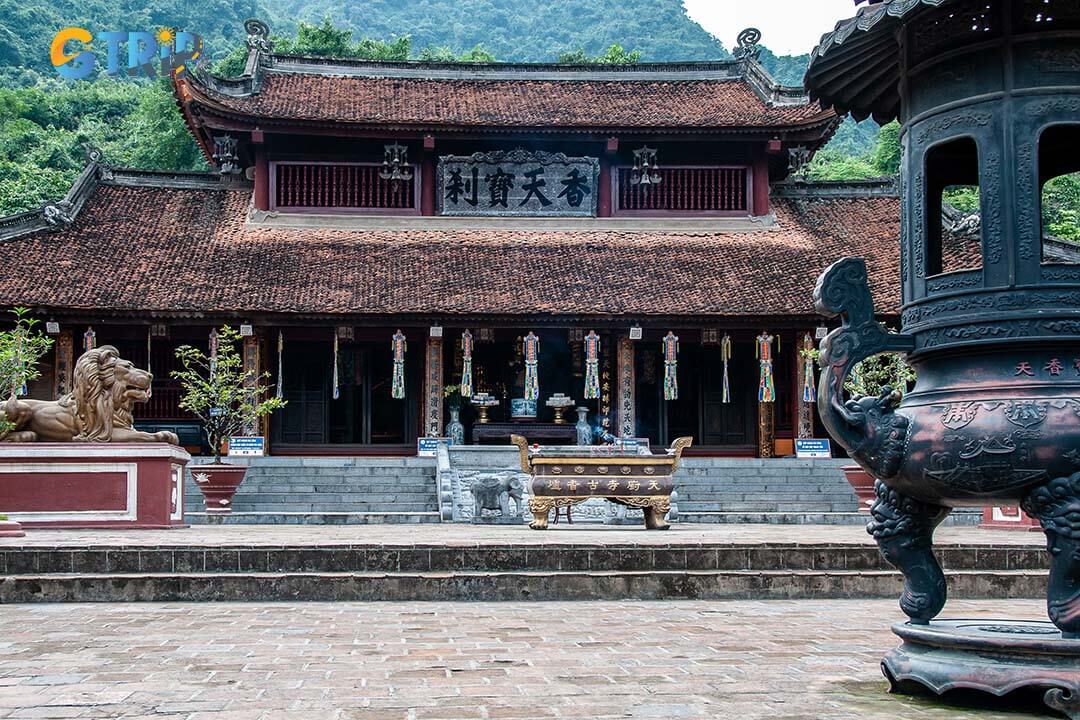
The Perfume Pagoda, a renowned religious site in Vietnam, blends spiritual significance with stunning natural beauty, making it a must-visit for both pilgrims
History of Perfume Pagoda
The Perfume Pagoda dates back to the 15th century, when Buddhist monks discovered the Huong Tich Cave between 1442 and 1497. This discovery led to the establishment of the thatched Thien Tru hermitage, creating a sacred pairing where Huong Tich Cave served as the "inner pagoda" and Thien Tru as the "outer pagoda". Together, they formed what became known as "Huong Thien Bao Sai" or the Perfume Pagoda, named for the delicate fragrance of spring flowers permeating the area.
The site underwent a significant transformation during the Le Trung Hung Dynasty. In 1686, the monk Tran Dao Vien Quang led an ambitious restoration and expansion of Thien Tru Pagoda. Under his vision, the entire complex evolved into a major cultural and religious center that attracted pilgrims from across Vietnam. The pagoda's spiritual significance deepened through its association with Lady Ba, believed to be an earthly manifestation of Avalokitesvara Bodhisattva. By the 17th century, the site had established its famous festival, drawing countless devotees seeking blessings and spiritual enlightenment. Though the complex suffered severe damage during the 1947 First Indochina War, an extensive restoration initiative began in 1989 under Venerable Thich Vien Thanh's guidance. This revival shaped the site into a revered pilgrimage destination and enduring symbol of Vietnamese spiritual heritage.
The structures of the Perfume Pagoda
The Perfume Pagoda complex is divided into four distinct areas, each with its own significant religious and historical sites.
Thien Huong Area
The Thien Huong Area is the most important and central region of the complex. Here, visitors will find the 15th-century Thien Tru Pagoda, also known as the Outer Pagoda, which features ancient architecture including a large triple gate, spacious courtyard, and a three-tiered bell tower. This pagoda serves as the main venue for religious festivals and meditation practices.
Thanh Huong Area
Deep within the mountain lies Huong Tich Cave, the most famous site in the complex. This natural limestone cave houses a green stone statue of Avalokitesvara Bodhisattva and is known as the "Number One Cave in the Southern Heaven". The cave's unique stalactite formations and cool, peaceful atmosphere make it a sacred pilgrimage destination. Other important sites in this area include the Ngu Nhac Temple, where visitors first offer incense upon arrival, as well as Giai Oan Pagoda, Cua Vong Temple, Tien Son Pagoda, Hinh Bong Pagoda, and Dai Binh Cave.
Long Van Area
The Thanh Huong Area sits higher in the mountains and receives fewer visitors, giving it a more tranquil atmosphere. This region contains Thanh Son Pagoda and Huong Dai Cave, offering a peaceful retreat for those seeking a quieter experience. Similarly, the Long Van Area features several caves and small pagodas. It includes Long Van Pagoda, Long Van Cave, Cay Khe Cave, and Thanh Hoa Cave. With its beautiful natural scenery, this area is perfect for visitors interested in both cultural exploration and natural beauty.
Tuyet Son Area
The Tuyet Son Area is the most remote region, housing Bao Dai Pagoda, Ngoc Long Cave, Ngu Tri Pagoda and Phu Yen Temple. These sites are connected to local legends and folk beliefs, and the area's distance from the main complex means fewer crowds. Most visitors begin their journey at Ben Duc Pier, traveling along the scenic Yen Stream by boat before exploring the complex. Today, visitors can choose between traditional boat travel or modern cable cars to move between these sacred areas, combining spiritual experience with natural beauty.
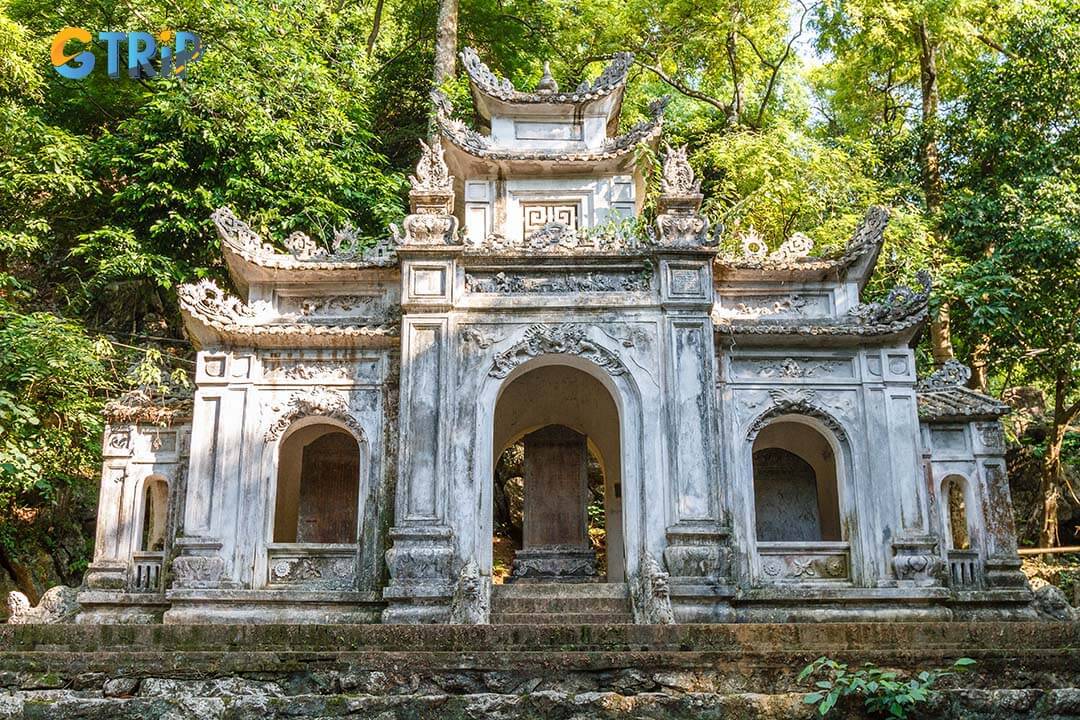
The Perfume Pagoda complex consists of four areas, Thien Huong, Thanh Huong, Long Van, and Tuyet Son, each offering unique temples, caves, and peaceful landscapes
Things to do at Perfume Pagoda
The Perfume Pagoda offers visitors a perfect blend of cultural immersion, natural beauty, and spiritual experiences. In this temple, architectural marvels nestled within limestone mountains and serene boat journeys and delectable local cuisine, this sacred complex provides numerous activities that appeal to both pilgrims and tourists. Here's what you shouldn't miss during your visit to this renowned destination.
Discover the Perfume Pagoda complex
The sprawling Perfume Pagoda complex encompasses numerous temples and shrines that showcase Vietnam's rich Buddhist heritage and architectural brilliance. Two key highlights stand out among the many sacred spots:
Thien Tru Pagoda (Heaven's Kitchen Temple) serves as the complex's outer temple and your first major stop after disembarking from the boat ride. Dating back to the 17th century, this magnificent structure features intricate wood carvings, vibrant ceramic decorations, and impressive bronze statues. The temple's three-tiered roof design exemplifies traditional Vietnamese architecture, with each corner gracefully curving upward toward the sky. Take time to explore the various altars, observe local worshippers, and appreciate the temple's harmonious integration with the surrounding landscape.
Huong Tich Cave represents the spiritual heart of the complex and houses the inner temple. Located higher up the mountain, this natural limestone cave contains the revered statue of Buddha Quan Am (Goddess of Mercy), believed to grant fertility and good fortune to those who pray here. The cave's entrance, carved to resemble a dragon's mouth, bears the inscription "Nam Thien De Nhat Dong" (The Most Beautiful Cave Under Southern Heavens), personally inscribed by a Trinh Lord in 1770. Inside, the cool, misty atmosphere creates an almost mystical environment, with stalactites and stalagmites forming natural sculptures illuminated by candlelight and incense smoke.
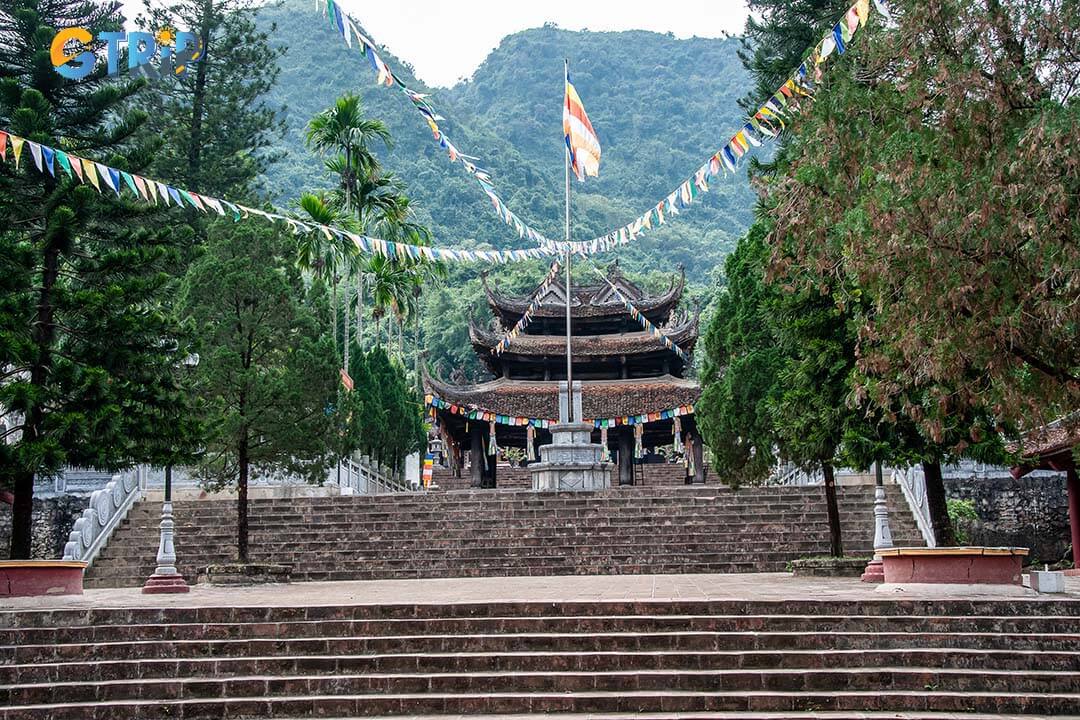
The Perfume Pagoda features Thien Tru Pagoda with its intricate design and Huong Tich Cave, home to the revered Buddha Quan Am Statue
Take a scenic boat trip on the Yen Stream
The journey to Perfume Pagoda begins with a mesmerizing boat ride along the Yen Stream that serves as both transportation and an attraction itself. Local women typically row these traditional wooden boats using their feet rather than hands impressive technique that has been passed down through generations.
The approximately 4km waterway winds gently through a landscape straight from a traditional Vietnamese painting. Limestone karsts rise dramatically from emerald waters, while seasonal flowers and dense foliage line the banks. During spring, especially after Tet (Vietnamese New Year), the stream becomes particularly enchanting as apricot and peach blossoms add splashes of color to the scenery.
Wildlife enthusiasts will appreciate glimpses of birds darting between reeds and occasional fish jumping from the crystal-clear water. The boat journey takes approximately one hour each way, providing ample opportunities for photography and quiet contemplation before arriving at the temple complex.
Capture stunning photos at Perfume Pagoda
The Perfume Pagoda complex offers photographers a paradise of visual opportunities with its dramatic landscapes and cultural elements:
- Limestone mountains - Frame your shots with the dramatic karst formations that create a natural amphitheater around the temples
- Colorful prayer flags - Capture these vibrant decorations as they flutter against the mountain backdrop
- Misty mornings - Arrive early to photograph the ethereal fog that often envelops the mountains before burning off
- Religious ceremonies - Respectfully document monks and pilgrims during prayer times (always ask permission first)
- Cave interiors - Experiment with long exposure shots to capture the mysterious atmosphere inside Huong Tich Cave
For the best lighting conditions, plan your photography during the golden hours of early morning or late afternoon when the sunlight casts a warm glow over the landscape. The reflection of temples in the Yen Stream creates particularly memorable images during calm weather conditions.
Enjoy local food
The culinary experience at Perfume Pagoda completes your cultural immersion with distinctive flavors unique to this region:
Round sticky rice cake (Banh Giay) have become a signature treat for visitors to bring home as souvenirs. These sticky rice cakes feature a sweetened mung bean filling wrapped in banana leaves, creating a delicately flavored dessert with a slightly chewy texture. The cakes pair perfectly with hot tea for a refreshing snack during your temple explorations.
Vietnamese nutty ginger sticky rice bar (Che Lam) represents another beloved specialty found along the path to the pagoda. This traditional sweet combines glutinous rice flour, ginger, peanuts, and molasses into soft, cube-shaped confections. The light brown treats come coated with a fine layer of rice flour and offer a lightly spiced sweetness that complements the earthy flavors of Vietnamese tea. Many visitors enjoy pairing che lam with apricot, creating a harmonious blend of flavors that reflects northern Vietnam's culinary heritage.

At Perfume Pagoda, indulge in local treats like Banh Giay, sticky rice cakes with mung bean filling, and Che Lam, nutty ginger rice bars, perfect with tea
Best time to visit Perfume Pagoda
The Perfume Pagoda offers unique experiences throughout the year, with each season bringing its charm. Your ideal time to visit largely depends on seek cultural immersion or peaceful reflection.
From January to March on the lunar calendar (typically February to April), the site bursts to life with the Huong Pagoda Festival. This is the most vibrant time, attracting thousands of pilgrims who create a bustling, spiritual atmosphere. Highlights of this peak season include red rice flowers blooming along the Yen Stream, traditional performances, folk singing, and local markets selling specialties and crafts. Spiritual energy runs high as devotees pray for blessings in the new year. However, visitors should be prepared for large crowds, particularly on weekends and festival days.
In contrast, the off-season offers a serene and contemplative alternative. During these months, the weather is pleasant and the number of tourists significantly decreases. From September to December, expect lush greenery, clear skies, misty mornings, and crisp, tranquil air, ideal for a peaceful visit. This period is ideal for unhurried temple visits, spiritual reflection, and photography free from crowds.
The Huong Pagoda Festival itself, running from the 6th day of the first lunar month to the end of the third lunar month, is a profound cultural experience. Key events include the Opening Ceremony (Khai Son), incense rituals at Huong Tich Cave, cheo singing, dragon dances, boat races, mountain pilgrimages, and OCOP product fairs. In 2025, visitors can enjoy added convenience through electronic ticketing and a new cable car line.
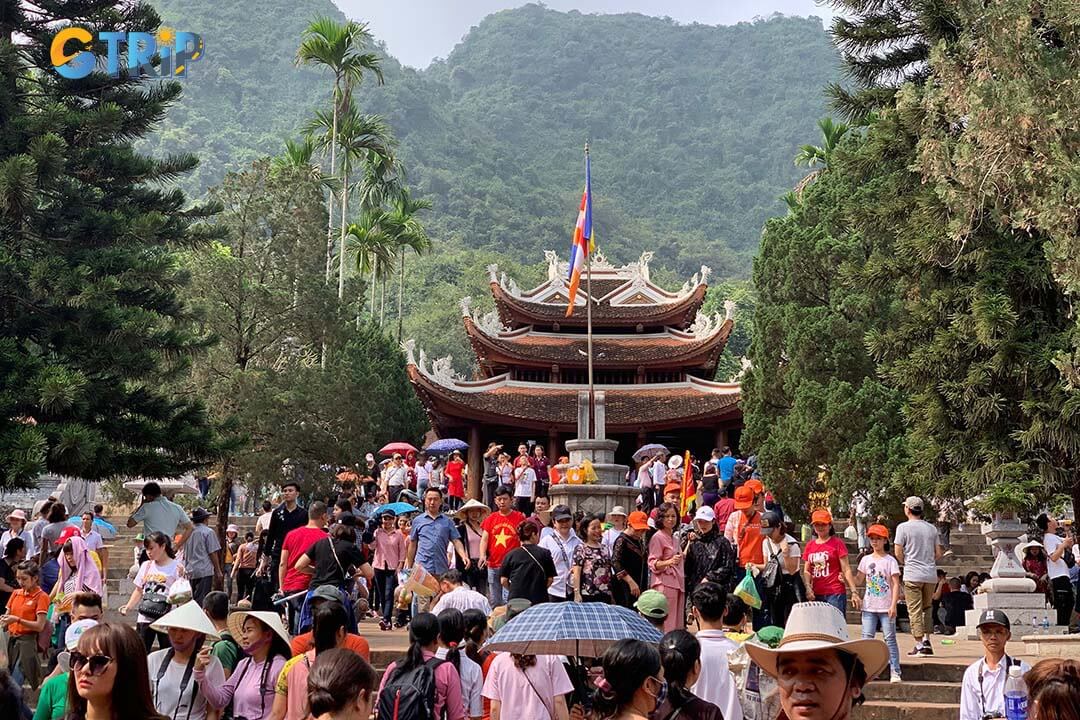
The Huong Pagoda Festival, from the 6th day of the first lunar month to the end of the third, includes rituals, performances, and boat races
How to get to Perfume Pagoda from Hanoi?
Traveling to the Perfume Pagoda from Hanoi offers you multiple transportation options to suit different preferences and budgets. The journey takes you approximately 60-70 km southwest of Hanoi through scenic countryside, ending at Ben Duc Wharf, where boat journeys to the pagoda complex begin. Each transportation method has its advantages, from economical public buses to convenient private cars or the freedom of motorbike travel. Here's a comprehensive guide to help you choose the best option for your pilgrimage.
By bus
Taking a bus to the Perfume Pagoda is an economical and straightforward option for budget-conscious travelers. Several public bus routes can get you to or near My Duc District, where the pagoda is located.
Public bus options:
- Route 211: Operates from My Dinh Bus Station directly to the Huong Son Area
- Route 78: From Giap Bat Station to Van Dinh, then transfer to a local bus
- Route 75: From Yen Nghia Station, requiring a short transfer
The journey by public bus typically takes 2-2.5 hours depending on traffic conditions and your starting point in Hanoi. Most buses operate from 5:00 AM to 7:00 PM daily. For convenience, bring small denominations of Vietnamese currency and arrive at the station early during peak pilgrimage season (January to March).
By car
Hiring a private car or taxi provides the most comfortable and time-efficient way to reach the Perfume Pagoda, particularly suitable for families or groups. The journey takes approximately one hour, significantly less than public transportation options.
The recommended route follows:
- Phap Van Highway
- Cau Thanh (Thanh Bridge)
- Dong Van intersection
- National Highway 38
- Dau Cho road
- Arriving at the pagoda entrance
Private car services offer several advantages:
- Door-to-door service from your hotel
- Air conditioning and comfortable seating
- Flexibility to stop along the way for photos or refreshments
- No need to navigate public transportation
Cost considerations:
- One-way private car: 500,000-800,000 VND
- Round-trip with waiting time: 1,000,000-1,500,000 VND
- Grab car or similar ride-sharing services: 400,000-600,000 VND (one-way)
By motorbike
Renting a motorbike offers the ultimate freedom to explore not just the Perfume Pagoda but also the scenic countryside along the way. This option is perfect for independent travelers comfortable with Vietnamese traffic conditions.
Recommended route from Hanoi center:
- Take Nguyen Trai Street toward the Thanh Xuan District
- Continue through Ha Dong district
- Pass Ba La area
- Reach the Van Dinh junction
- Follow signs to Huong Son/Perfume Pagoda
The journey covers approximately 70 km and takes about 1 hour and 50 minutes, depending on your riding pace and stops. The roads are generally in good condition, though caution is needed during the rainy season.
Important considerations for motorbike travelers:
- Rent from reputable shops in Hanoi (100,000-150,000 VND/day)
- Ensure you have a valid license and insurance
- Wear a helmet (mandatory by law)
- Download offline maps before departure
- Bring sun protection and rain gear
Many riders appreciate stopping in local villages along the route for authentic food experiences and photography opportunities that aren't possible with other transportation methods. The motorbike option combines transportation with adventure, making it popular among younger travelers.

There are many means to move to Huong Pagoda, but visitors have to take an additional part of the boat or cable car to reach the temple
Important notes when visiting the Perfume Pagoda
Planning your journey to the mystical Perfume Pagoda (Chua Huong) requires thoughtful preparation to ensure a meaningful and respectful experience. The sacred site welcomes thousands of pilgrims and tourists annually, particularly during festival season. Follow these essential guidelines to navigate this spiritual destination smoothly while honoring local customs and traditions.
- Start your journey early in the day: Arriving before 8 AM helps you avoid the midday crowds and heat, especially during the festival season from January to March when pilgrim numbers peak dramatically.
- Dress respectfully and modestly: Wear clothing that covers your shoulders and knees as this is a sacred Buddhist site. Comfortable walking shoes are essential for climbing the steep paths to Huong Tich Cave.
- Maintain cleanliness throughout your visit: The pagoda complex is considered sacred ground; dispose of trash properly in designated bins and respect the natural environment that locals view as blessed by Buddha.
- Prepare for variable weather conditions: Mountain weather can change rapidly; bring lightweight rain gear during monsoon season (May-September), sun protection year-round, and warm layers during winter months (December-February).
- Safeguard your valuables carefully: Keep money, phones, and cameras secure, particularly when boarding boats or navigating crowded temple areas where pickpockets occasionally target distracted visitors.
- Negotiate prices before purchasing souvenirs: Local vendors sell beautiful handicrafts and religious items, but prices are rarely fixed. Polite bargaining is expected, especially for larger purchases.
- Prepare offerings thoughtfully: Traditional offerings include incense, fruit, flowers, and prayer papers. These can be purchased at entrance areas, but bringing meaningful items from home adds personal significance to your prayers.
- Carry small denominations of Vietnamese dong: Small shops, boat operators, and food stalls often cannot provide change for large bills. Having 20,000-50,000 VND notes will make transactions smoother.
- Allow sufficient time for exploration: A complete visit requires at least 5-6 hours, including boat rides, cave exploration, and pagoda visits. Rushing through the experience diminishes its spiritual significance.
- Respect photography restrictions: Some inner sanctums prohibit photography or require special permission. Always observe posted signs and ask temple guardians before taking pictures of sacred objects.
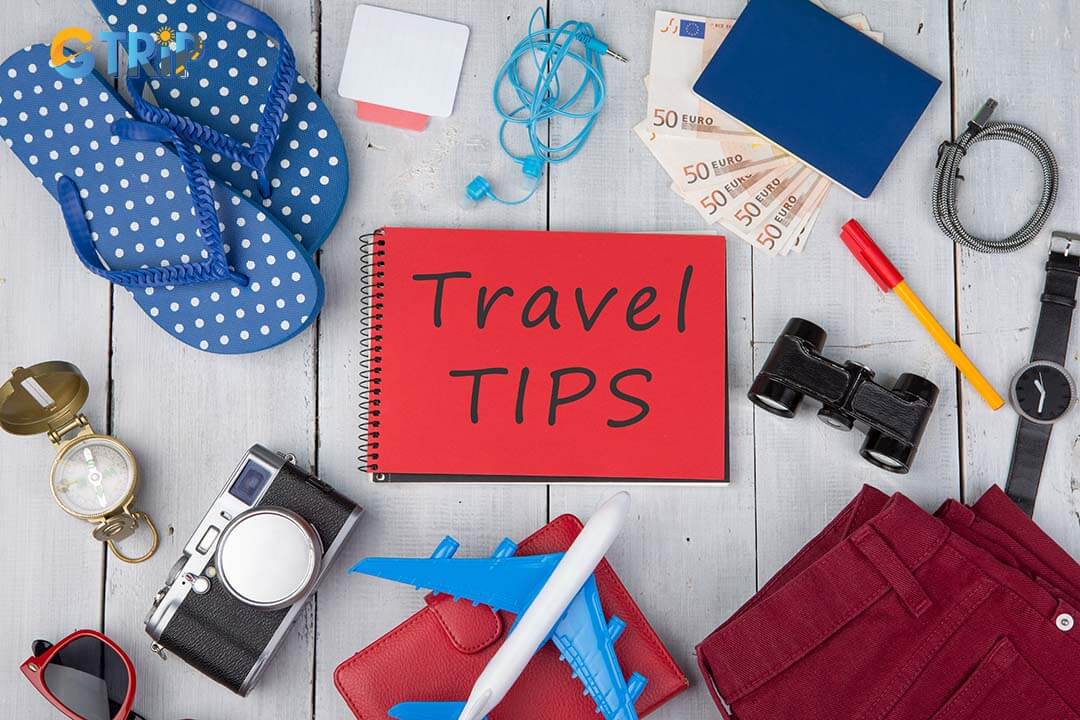
Prepare for your visit to the Perfume Pagoda by following essential guidelines to ensure a respectful and meaningful experience at this sacred site
As you navigate the tranquil beauty and spiritual resonance of the Perfume Pagoda. It's clear that this destination offers more than just scenic views, it provides a journey into cultural richness and personal reflection. If you're drawn to its serene temples or the lush landscape, your experience is one of connection to both nature and history. This attraction isn't merely a place on a map; it's an invitation to pause and appreciate life's deeper meanings.
By exploring destinations like these with GTrip, you're broadening your travel horizons and enriching your world perspective. If wanderlust calls again, remember there are always new paths and stories waiting for your next adventure.

